Summary of climate disasters on the planet: April 23–29, 2025
This episode presents a summary of climate disasters that struck our planet from April 23 to April 29, 2025.
Only facts—no exaggerations—so you can see for yourself what is happening with the climate, and most importantly, understand who determines what tomorrow will be like for all of us.
Europe
At the end of April, a wave of extreme weather swept across Europe, affecting several countries at once.
Starting April 23, Hungary was struck by powerful storms, accompanied by strong winds and intense thunderstorms.
Torrential rains and sudden flooding caused damage in the Transdanubia region. In the village of Kajárpéc (Győr-Moson-Sopron County), a month’s worth of precipitation fell in just one hour.
In Somogy County, some roads were completely flooded with mudflows, bringing traffic to a halt. There were also disruptions to rail transport—one train even had to return to its departure station. Rail service between the towns of Tab and Mernye was suspended.
In the city of Szekszárd (Tolna County), there was so much water in some areas that garbage containers were literally floating through the streets.
The northeast of the country was also affected, particularly the town of Edelény and the villages of Ziliz and Borsodszirák in Borsod-Abaúj-Zemplén County: extreme rainfall was accompanied by heavy hail up to 3 cm in diameter. Streets and fields were blanketed with a layer of ice that melted very slowly.
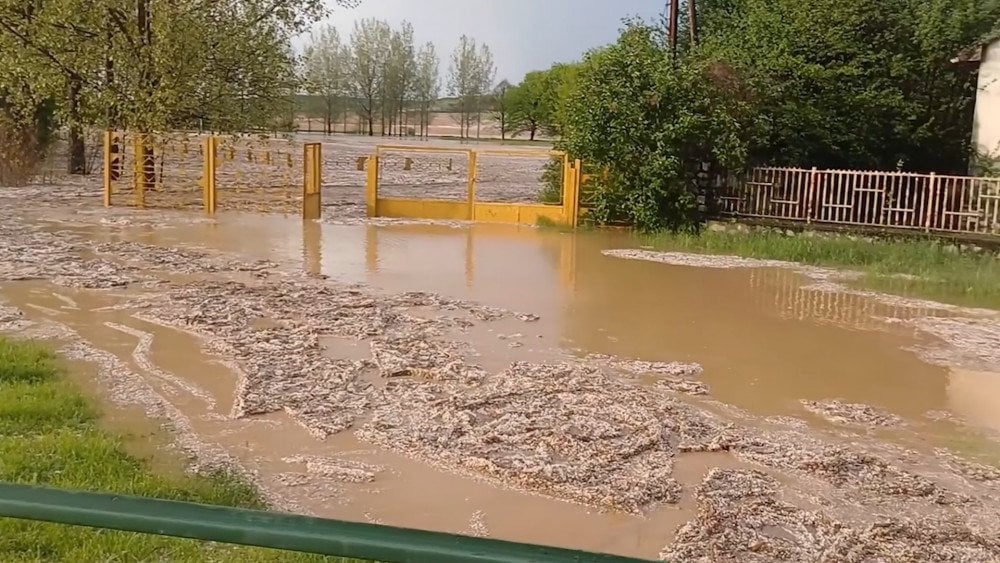
Heavy rains and hail flooded the streets of Borsodszirák village, Borsod-Abaúj-Zemplén County, Hungary
In Szabolcs-Szatmár-Bereg County, hail damaged fruit trees, which had already been weakened by frosts earlier in April.
On April 23, southern Germany and the Harz Mountains in the north were hit by intense thunderstorms with downpours and hail.
According to a meteorologist, the very fact that such phenomena are already occurring in April causes serious concern.
In some mountain villages, streets were flooded with muddy water that in some areas reached knee-deep levels.
The very next day, on April 24, severe weather struck Bosnia and Herzegovina. A powerful storm hit the Majevica region, disrupting traffic along a key transport route between Bijeljina and Tuzla.
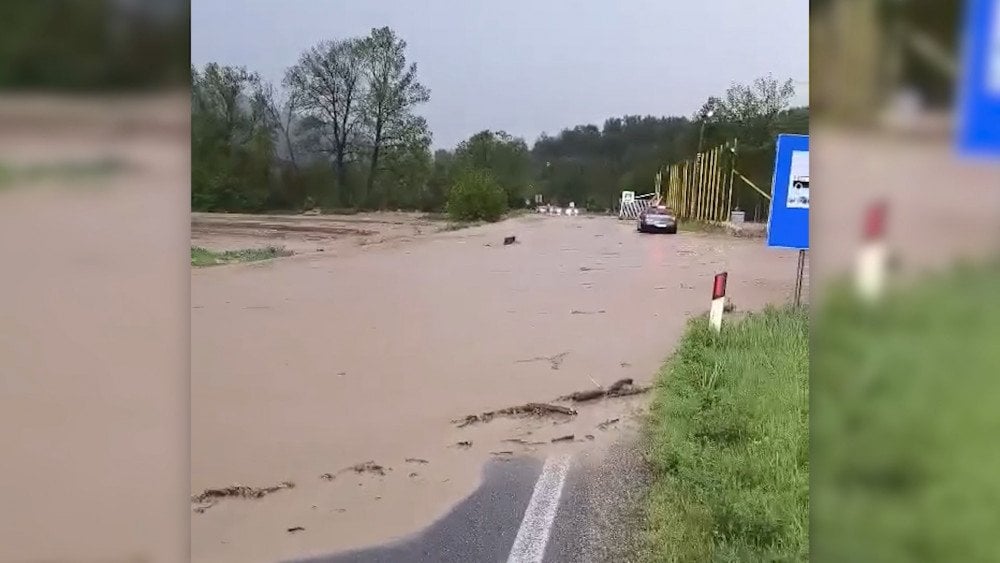
Flooded section of the road between Bijeljina and Tuzla after a powerful storm, Bosnia and Herzegovina
In the Podmajevica region, torrential rain flooded homes, caused landslides, and damaged crops, putting the harvest at risk.
On April 26, heavy rain and hail inflicted serious damage across much of Romania. The town of Râșnov was especially affected by a violent storm with heavy downpour and hail. Local residents said water quickly flooded roads and sidewalks. Longtime residents admitted they had never seen anything like it before.
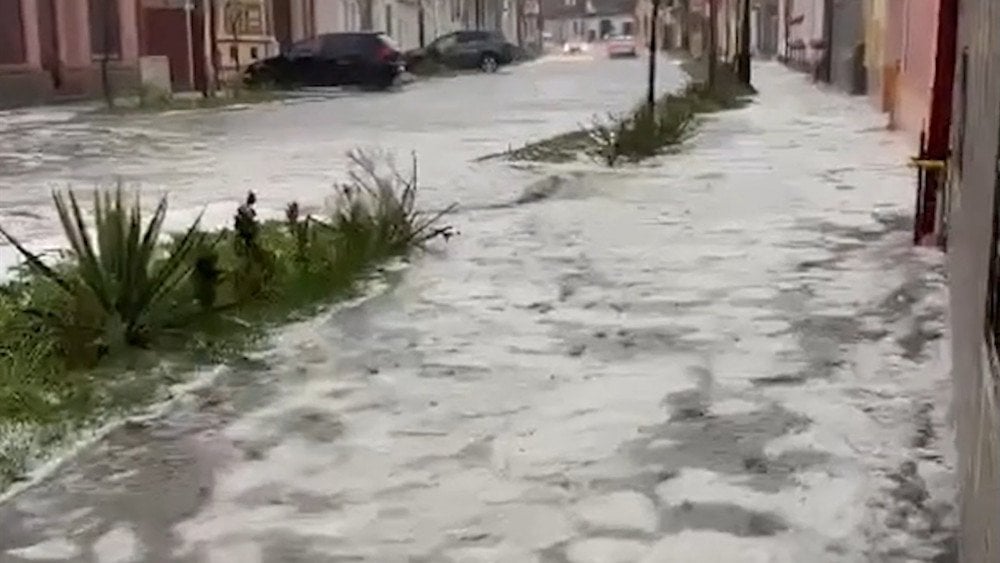
Streets of Râșnov after a severe storm with heavy rain and hail, Romania
The Minister of Environment stated that Romanian fruits will be in short supply this year, as spring frosts have damaged the crops of cherries, sweet cherries, apricots, and peaches.
In Montana Province, Bulgaria, heavy rainfall flooded yards, basements, and ground floors of homes. In the villages of Lehchevo and Kobylyak in Boychinovtsi Municipality, 72 mm (2.8 in) of precipitation fell in about an hour on April 26.
In Italy, severe hail caused significant damage to agriculture — primarily wheat crops in the area of Lucera, Foggia Province. In some places, hail piles reached 20 cm (7.9 in) high. Road traffic was severely disrupted.
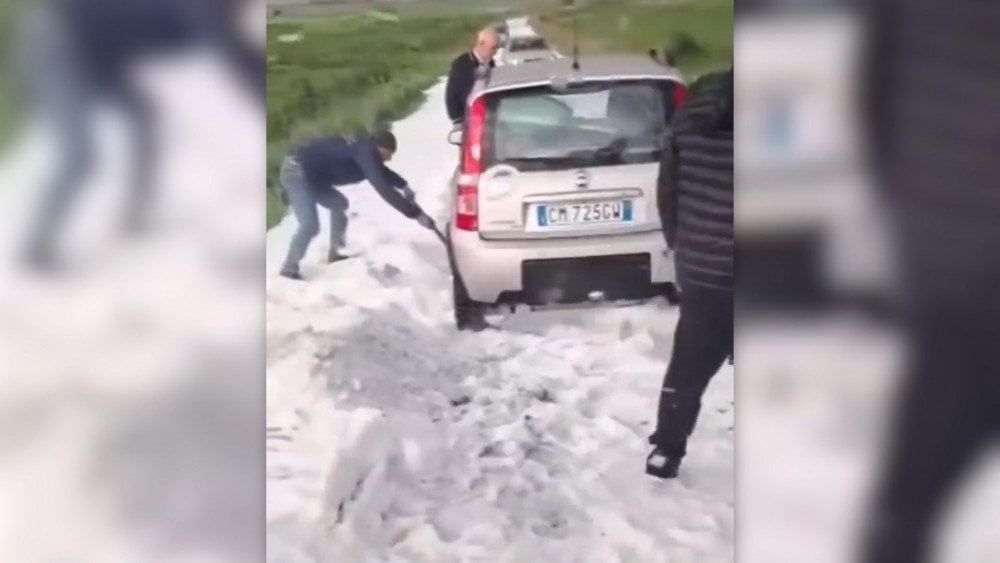
People try to free a car stuck in hail drifts on the road, Italy
On April 26, a tornado was recorded in Ukraine. It formed in the Brovary district of Kyiv region and quickly drew attention on social media.
Such whirlwinds occasionally develop in the country in mid-summer, primarily in the southern regions, where heat and maritime air create favorable conditions for them.
However, a tornado near Kyiv in April is clearly an anomaly.
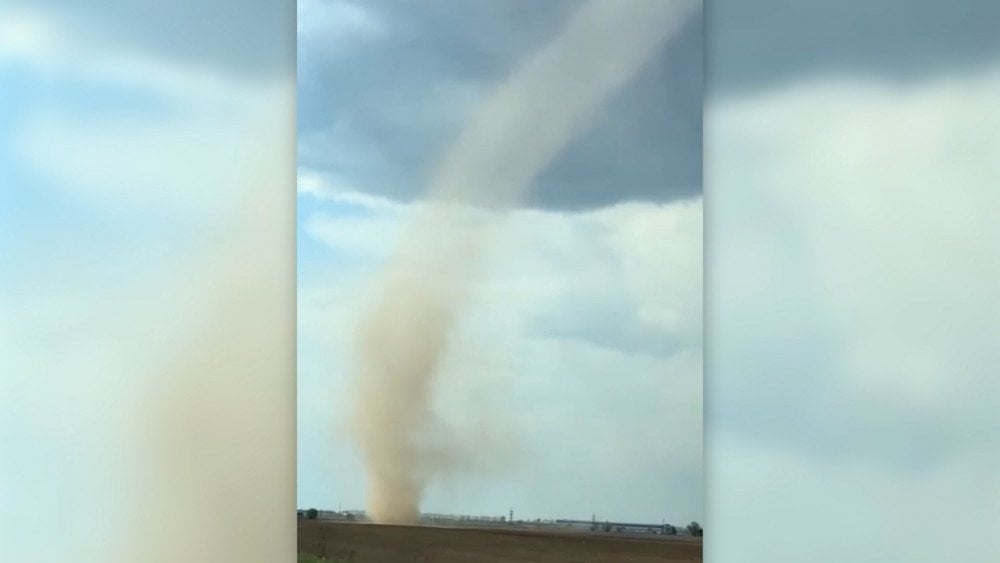
Extremely rare phenomenon — tornado in Brovary District, Kyiv Region, Ukraine
Experts note that while the recorded tornado was relatively weak, such whirlwinds could become stronger and more dangerous in the future.
In the municipality of Heraklion, on the island of Crete, Greece, the village of Voutes is facing a worrying situation due to the sudden appearance of widespread ground cracks.
The first signs of the anomaly were detected on April 23, when a crack split open a road. The geological phenomenon quickly escalated, affecting buildings, streets, roads, and infrastructure. Within just a few days, more than 20 houses were damaged, 9 of which became completely uninhabitable.
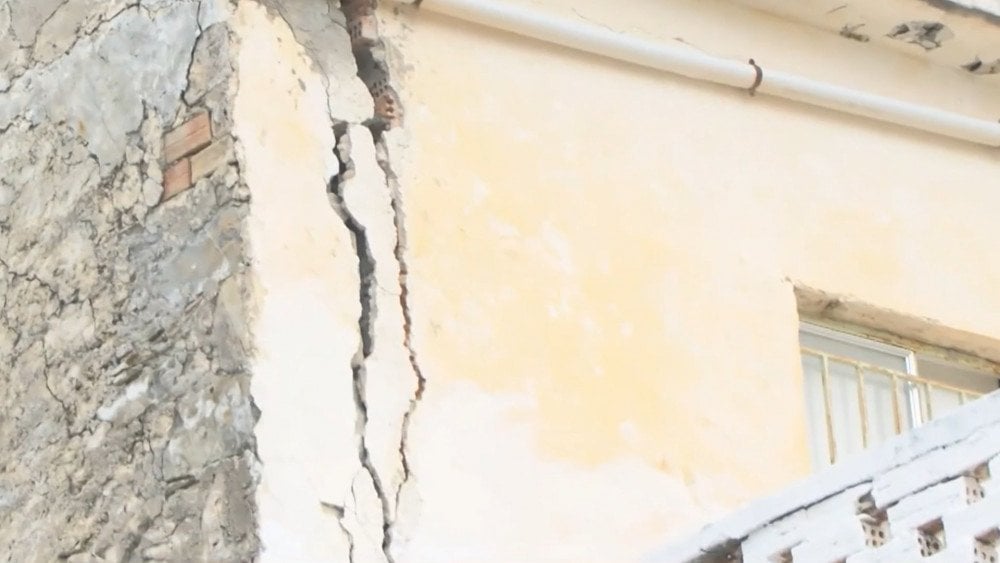
One of the buildings damaged by the widespread ground fissures, Voutes village, Heraklion municipality, Crete, Greece
Local residents are deeply concerned. According to them, multiple new cracks are appearing daily throughout the village, but experts have not yet identified the cause.
Ecuador
A powerful 6.3-magnitude earthquake hit near Ecuador’s northern coast early Wednesday morning, about 5.2 miles (8.4 km) from the city of Esmeraldas. The quake struck at 6:44 a.m. local time (LT) on April 25.
Due to the relatively shallow depth of the epicenter (30 km / 18.6 mi) and the high magnitude, the tremors were felt by residents in 10 of the country's 24 provinces, including the densely populated capital, Quito.
The earthquake caused significant damage to residential buildings and infrastructure: nearly 1,000 structures were affected, with at least 179 completely destroyed. In addition, two bridges were damaged.

Building destroyed by the powerful M6.3 earthquake in Ecuador
According to the National Secretariat for Risk Management (SNGR) of Ecuador, 32 people were injured as a result of the seismic event.
In Esmeraldas Province, the closest to the epicenter, up to 90% of households experienced power and telecommunications outages.
As a precaution, operations at a Petroecuador oil refinery were suspended.
Twenty-five minutes later, at 07:09 local time, another earthquake was recorded in a different coastal province—Guayas, in the southwest of the country, 6.45 km from the city of Samborondón. This second quake had a magnitude of 4.1 and a depth of 86 km (53.4 mi).
Israel
Large wildfires broke out in Israel on April 23, fueled by scorching temperatures, strong winds, and dry conditions. The rapid spread of flames turned central parts of the country into a disaster zone.
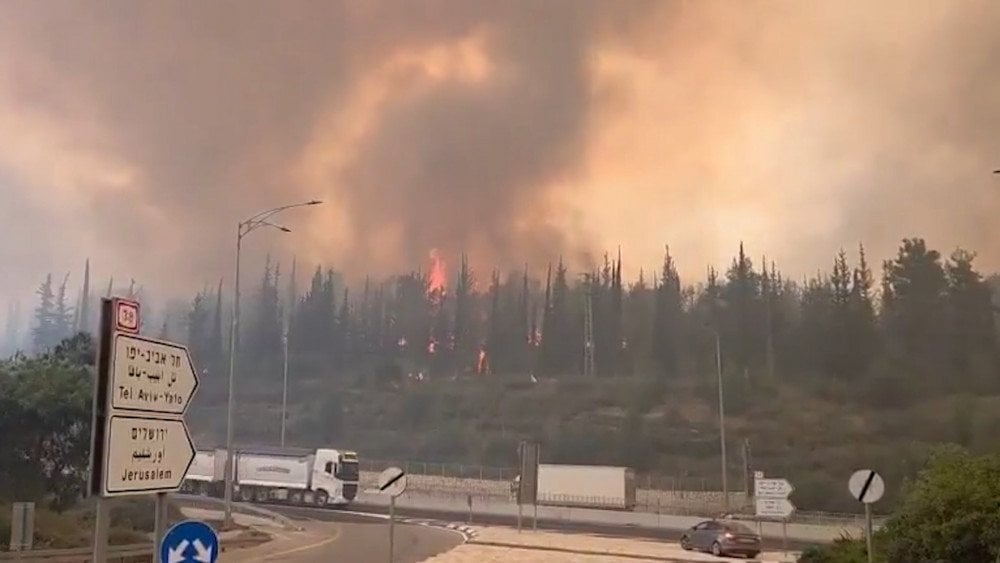
Massive wildfire in Israel: flames rapidly spread through arid terrain, threatening populated areas
The largest fire ignited between Tel Aviv and Jerusalem, affecting natural areas around Beit Shemesh and the Eshtaol Forest. The fire spread quickly toward residential areas, prompting the emergency evacuation of several rural communities: Eshtaol, Mesilat Zion, Beit Meir, and Tarum. Key regional highways—Routes 6, 38, and 44—were closed.
Train services were also halted.
Dozens of firefighting crews, planes, and helicopters were deployed to battle the flames, but the fire was only brought under control after 30 hours.
More than 1,000 hectares (2,471 acres) of land were burned. Several people suffered from smoke inhalation.
Another wildfire destroyed large portions of the Einot Givaton Nature Reserve, which had been restored just two years ago after a decade-long rehabilitation project. More than 20 hectares (49 acres) of rare wetland habitat were consumed by flames. The fire also spread to agricultural lands of several communities: Petahia, Pedaya, and Yatzitz.

Wildfire in Israel: smoke from active fire zones blanketed a vast area (aerial view)
Rescue teams evacuated both people and animals caught in the fire’s path. The ecological damage to the region is catastrophic.
Turkey
On April 23 at 12:49 local time, a powerful earthquake with a magnitude of 6.2 struck the Marmara Sea, near the Silivri district of Istanbul Province. The epicenter was located at a depth of 6.92 km (4.3 mi).
The shaking lasted for 13 seconds, prompting many residents to rush into the streets, fleeing homes, offices, cafes, and other buildings in panic.
At least 359 people were injured in Istanbul and neighboring provinces.
Some suffered injuries while jumping from windows, others were hurt in the stampede, and many sought medical help for panic attacks.
According to the Ministry of Environment, Urbanization and Climate Change, as of April 28, the earthquake damaged more than 1,600 homes.
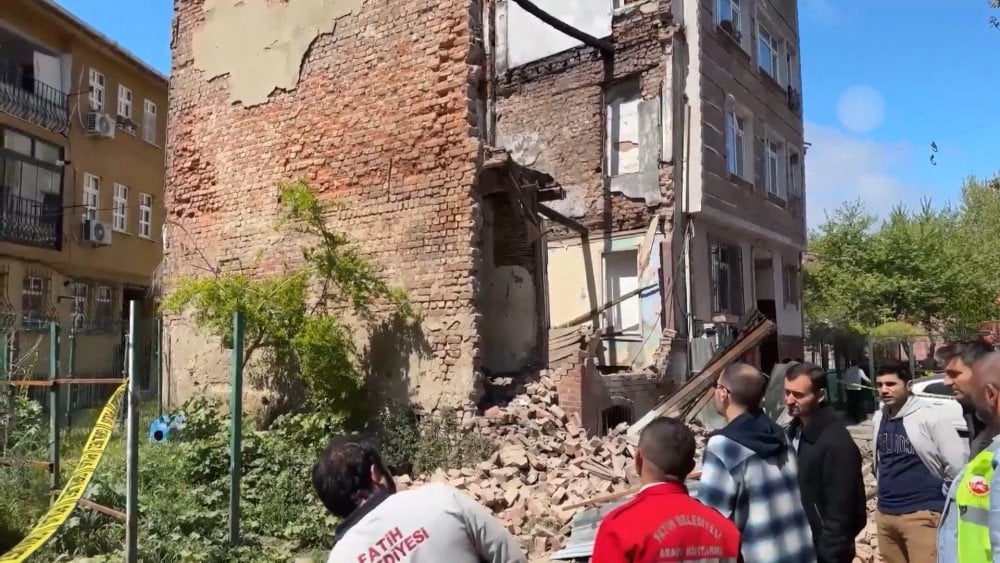
Aftermath of the M6.2 earthquake in Turkey: collapsed wall of a residential building, locals inspecting the damage
As of April 27, more than 400 aftershocks followed the main quake, some of them very strong, reaching magnitudes up to 5.9.
After the February 2023 tragedy, when two devastating earthquakes (magnitude 7.8 and 7.5) claimed nearly 60,000 lives in Turkey and Syria, every seismic event triggers intense fear among people in this region.
That’s why, after the April 23 earthquake, many residents were afraid to return to their homes, spending the night outdoors in parks, tents, cars, and mosques.
Tremors were also felt in neighboring countries: Greece, Bulgaria, and Romania.
South Africa
On April 25, heavy rainfall struck KwaZulu-Natal Province in the Republic of South Africa, causing widespread flooding in the city of Durban and surrounding areas.
Rapid torrents of water instantly turned roads into dangerous traps, paralyzing traffic and causing severe damage to transport infrastructure.
The situation was especially dire in the Umlazi area (eThekwini Municipality, KwaZulu-Natal Province), where the disaster caused significant destruction: homes were destroyed and bridges were damaged.
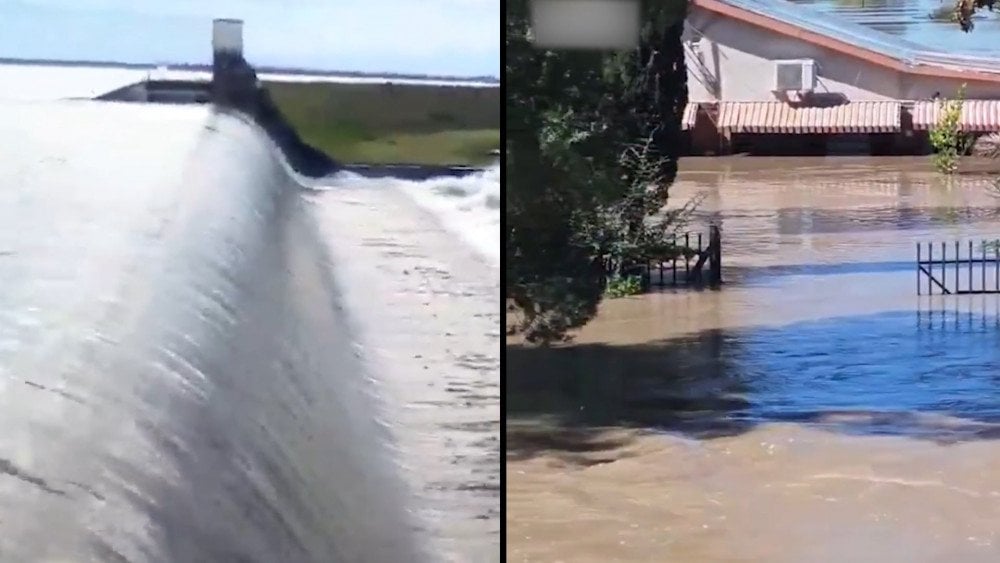
Devastating flood in South Africa: flooded streets and homes
Tragically, one person died, and at least five others were injured and hospitalized.
Russia
Bezymianny — one of the most active volcanoes in Kamchatka — reminded the world of its power with a massive eruption that peaked on April 24. The ash plume rose to a height of up to 11 km (6.8 mi). Contrary to forecasts, the cloud suddenly shifted southwest and covered several settlements in the Milkovsky District.
Local residents reported that midday turned as dark as night — sunlight could barely penetrate the thick ash cloud. Everything was covered in a layer of ash up to 3 mm (0.12 in) thick, resulting in the closure of water supply facilities.
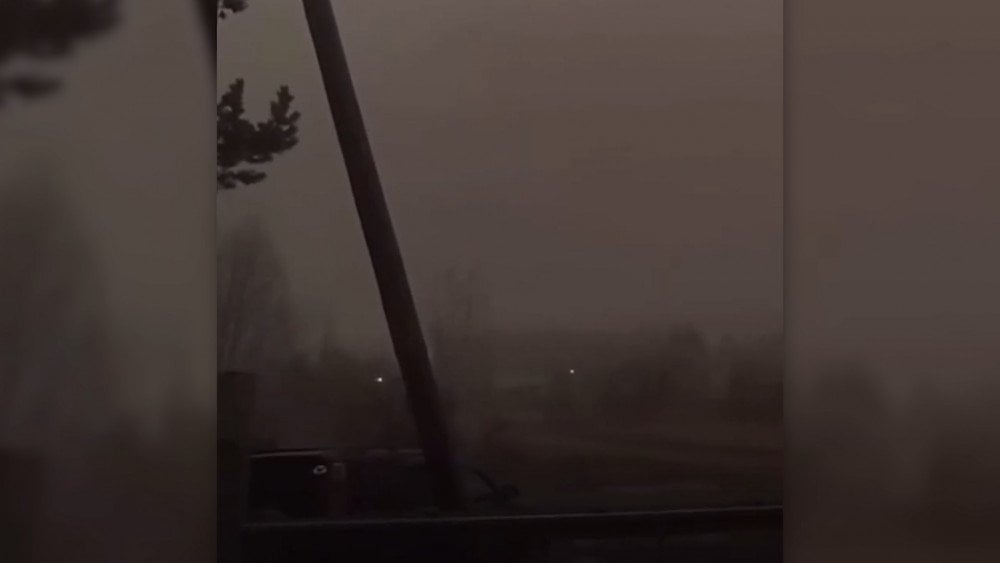
Eruption of Bezymianny volcano in Kamchatka: ash cloud envelops settlements, turning day into night, Russia
The volcano was assigned a “red” aviation hazard code, and the region was placed under a heightened alert status.
On April 25, ash reached Petropavlovsk-Kamchatsky, hovering over the city at altitudes up to 5 km (3.1 mi)—an extremely rare occurrence, considering the volcano is located more than 350 km (217 mi) away.
Such long-distance ash transport is only possible with exceptionally powerful eruptions and a rare combination of atmospheric conditions.
According to a volcanologist, this time the volcano behaved atypically: the eruption was preceded by an unusually long period of activity.
Meanwhile, Transbaikal (Zabaykalsky Krai) became the epicenter of wildfires in Russia. By the end of April, 99% of all active fires in the country were concentrated here. The total area affected by the flames exceeded 330,000 hectares (815,450 acres). Since April 23, a federal-level state of emergency was declared in the region.
The catastrophic situation in Transbaikal has continued for over a month.
As of April 29, 44 wildfires were raging in the region. Forests, fields, and settlements were burning. In just one day—April 28—more than 20 homes were destroyed in the villages of Novopavlovka, Pad’ Glubokaya, and Preobrazhenka—some reduced to nothing but chimneys.
Flames approached Chita, cloaked the city in smoke, filled the air with soot, and reduced road visibility to zero in some areas. The Amur federal highway was closed.
On April 28, military storage facilities near the village of Bolshaya Tura in Karymsky District caught fire. They were extinguished from the air, and the blaze was brought under control.
Nearly 1,500 specialists were involved in the firefighting effort, supported by Il-76 aircraft.
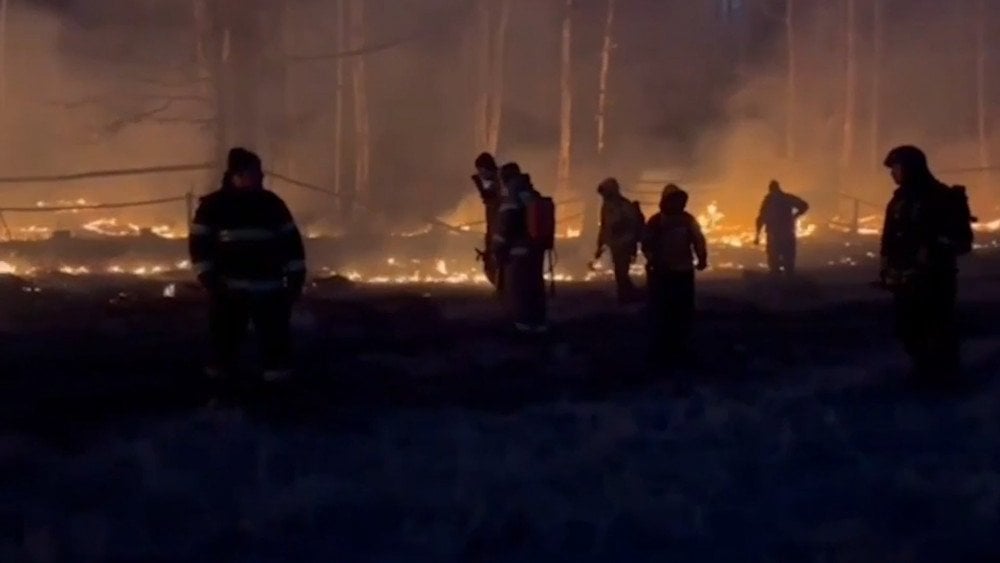
Rescuers battling a wildfire in Transbaikal, Russia
It is evident that natural disasters are escalating at an alarming rate. Yet despite this growing threat, we're witnessing troubling inaction from international decision-makers.
The reasons for this vary: from misunderstanding the cause of events, to fear of causing public panic in the absence of ready solutions. Some even deliberately avoid action, prioritizing self-interest. And the list goes on.
But regardless of the underlying motives, one key factor can break this deadlock: public demand. Political institutions ultimately respond to the will of the people, and they cannot ignore unified calls from citizens.
The truth is, humanity already possesses the knowledge, analytical tools, and technologies needed to address climate challenges. What's missing is the decisive shift to practical action.
This is where individual participation becomes crucial.
Sharing verified information, discussing these issues in our communities, and demanding that climate disasters become a global priority – these simple but powerful steps can generate the necessary public demand for change. This collective power to alter the course of events lies in the hands of each of us.
You can watch the video version of this article here:
Leave a comment